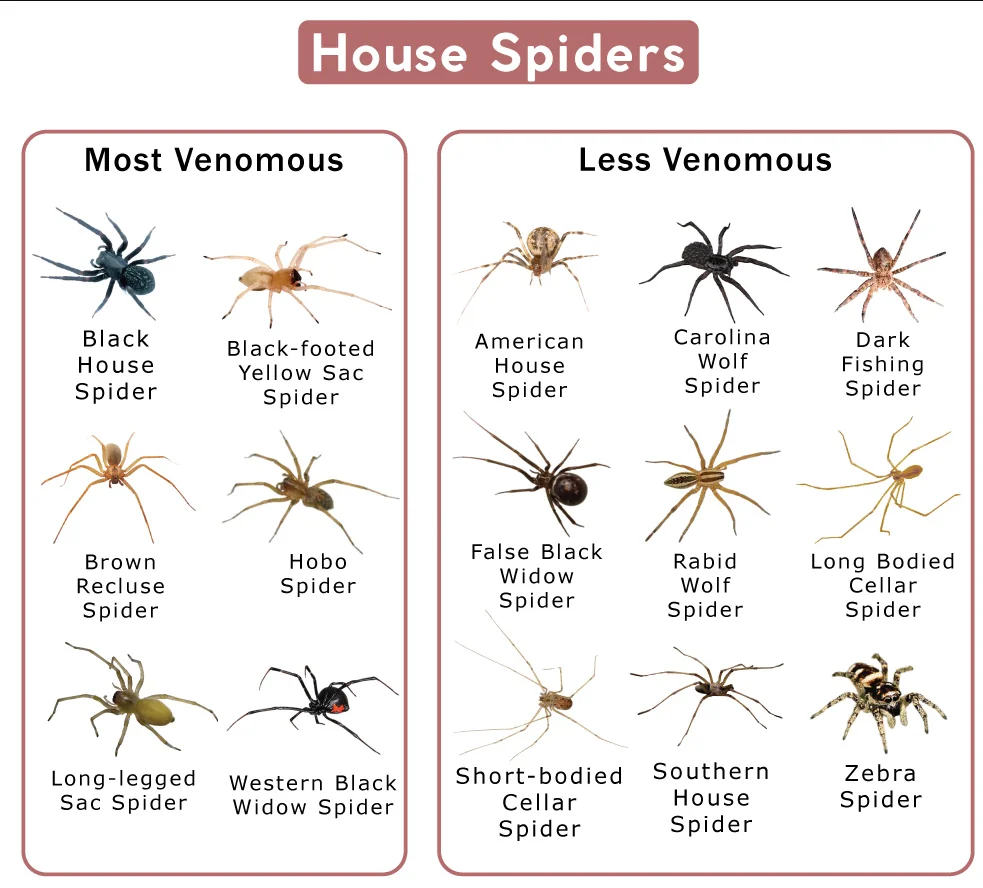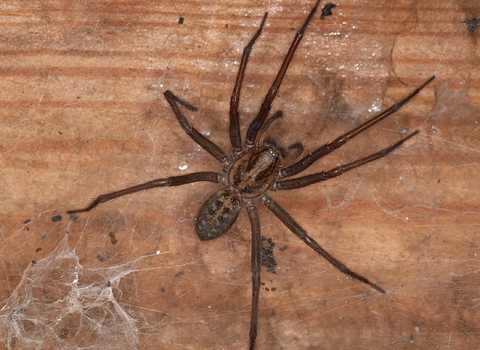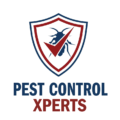Spider Treatments in Florida
Exterminator Services for Haines City, Lake Alfred, Winter Haven, Lake Wales, Davenport, and Polk City
Florida’s subtropical climate—marked by warm temperatures, high humidity, and milder winters—makes it appealing not only for residents but also for a variety of spiders. From orb weavers on porches to house spiders in hidden corners, these eight-legged pests flourish year-round if conditions remain favorable. In places like Haines City, Lake Alfred, Winter Haven, Lake Wales, Davenport, and Polk City, a reliable spider exterminator often proves essential when unwanted webs or sightings escalate beyond a casual nuisance. This service page delves into why spiders thrive in Florida, how to recognize infestation signs, and the recommended professional treatments that restore comfort and safety to any property.
Why Spiders Thrive in Florida

1. Warm, Humid Weather
Spiders require moderate to high temperatures and sufficient moisture to remain active and reproduce. In Florida, even brief cool spells seldom last long enough to disrupt spider life cycles. In fact, temperature-controlled interiors, combined with the outdoor warmth, allow many spider species to remain comfortable indoors year-round, especially if insects are plentiful for them to prey upon.
2. Abundant Insect Population
Because spiders feed on other bugs—like mosquitoes, flies, moths, and roaches—they easily find sustenance in Florida’s climate, which supports robust insect life. Well-lit interiors or exteriors can lure insects near windows, porches, or doorways, providing spiders with consistent meals. As long as they have reliable prey, these arachnids can multiply quickly.
3. Diverse Hiding Spots
Whether a property is older, featuring small gaps and cracks, or newer with decorative landscaping close to exterior walls, spiders find plenty of nooks to nest. Garages, basements, attics, or under-eave spaces become prime real estate for web-building species. Dense shrubs, overhanging tree limbs, or unswept corners indoors further expand spider territory.
4. Minimal Seasonal Decline
States with extended freezing winters often see a natural dip in spider populations, but Florida’s mild cold snaps rarely affect them. Spiders continue thriving in year-round mild temperatures, meaning their egg sacs hatch consistently. Without a natural seasonal die-off, even a small spider presence can grow significantly unless acted upon.
Telltale Signs of Spider Infestations
1. Webs in Corners or on Ceilings
One of the most apparent signals is spotting multiple webs along ceiling corners, behind furniture, or near window sills. Different species create various web styles—orb-shaped, funnel-like, or tangled cobwebs. Finding webs in several rooms can indicate a larger spider population inside.
2. Egg Sacs on Walls or Furnishings
Many spider species protect their eggs in small, rounded or elongated silk sacs. These sacs often attach to webs, hidden corners, or under furniture edges. Spotting multiple egg sacs suggests active breeding, potentially producing dozens of spiderlings that soon spread around the property.
3. Frequent Spider Sightings
Seeing a single spider occasionally might not be alarming. However, regular encounters—especially of the same species—signal that your home or business provides ample prey and harborage. If you notice multiple spiders in different rooms, their population might be expanding beyond random intrusions.
4. Accumulated Insect Remains
Because spiders feed on insects, leftover bits of prey may pile up in or near webs. Crushed wings or small exoskeleton fragments indicate ongoing spider activity. If you find such debris around windows, doorways, or lighting fixtures, it could mean spiders are actively hunting in those zones.
5. Musty or Faint Odor in Severe Cases
A heavier spider presence, especially with older webs and egg sacs, might emit a slightly musty odor. While not the most reliable clue, combining this smell with visible webs, spider sightings, and insect remains strongly implies an infestation has taken hold.
Risks of Ignoring Spiders
1. Rapid Population Growth
Spider egg sacs can hatch dozens to hundreds of spiderlings. Even if you remove a few adult spiders, leftover sacs can deliver new generations, perpetuating the infestation. Without timely intervention, web-filled corners or repeated sightings might spread from one room to several.
2. Anxiety and Discomfort
Many people feel uneasy about spiders, particularly if they appear around sleeping areas, children’s rooms, or heavily used living spaces. Large webs or scurrying spiders can generate stress and discourage guests from feeling comfortable in your home or business.
3. Possible Dangerous Species
While most spiders in Florida remain harmless, certain widow spiders and reclusive species pose bite risks. Encountering these in cluttered garages, closets, or rarely accessed spaces can lead to painful or medically concerning bites if not addressed.
4. Potential Indicator of Other Insect Issues
Spiders thrive where insects abound. A sudden influx of spiders might indicate a related infestation of mosquitoes, roaches, or other bugs. Overlooking spider infestations could allow the root insect population to expand, complicating future pest management efforts.
5. Negative Business or Home Reputation
If a commercial space frequently features webs in public view or employees mention spider sightings, customers may doubt the premises’ cleanliness. In rental or hospitality sectors, negative online reviews about spiders can deter potential tenants or guests.

Why a Professional Exterminator Is Crucial
1. Precise Species Identification
Florida hosts diverse spider varieties—some orb weavers outside, others funnel-weavers in crawl spaces, or widow species in dark corners. A spider exterminator identifies which species is active, directing control measures that match specific nesting habits and dietary preferences.
2. Comprehensive Inspection
Professionals thoroughly explore your property’s indoor and outdoor areas, from attic crawl spaces to yard edges, unearthing webs, egg sacs, or insect hotspots that feed spider populations. DIY or cursory checks may miss hidden egg sacs or baseboard cracks hosting spiders.
3. Targeted Treatments
Quick-fix sprays often fail to reach eggs inside cracks or behind walls. Exterminators use specialized insecticides, dusts, or growth regulators that kill adult spiders while preventing juveniles from maturing. They also remove visible webs and egg sacs, reducing future spread.
4. Reduction of Insect Prey
Because spiders follow food sources, professionals frequently incorporate insect management—like roach or ant treatments—into a spider control plan. By limiting the availability of insects, they indirectly starve out spider populations, curbing their impetus to remain.
5. Long-Term Preventative Strategies
A robust solution doesn’t end with initial spider removal. Many exterminators provide guidelines on sealing cracks, rearranging lighting (to attract fewer insects), and removing indoor/outdoor clutter. They can also schedule follow-ups to re-check previously active zones, ensuring reemerging spiderlings don’t rebuild.
Typical Methods for Spider Treatments
1. Inspection and Web Removal
Technicians evaluate indoor living spaces—attics, basements, closets—and check around windows, doors, eaves, or garden areas. Physical removal of webs and egg sacs immediately reduces the spider population and disrupts breeding. This step also reveals hidden corners that need chemical application.
2. Indoor Spray or Dust Applications
Residual insecticides or dust target dark corners, cracks, and baseboards where spiders nest. Since many spiders roam in search of prey, these treatments create barriers that expose them to lethal doses whenever they traverse treated surfaces. Occupants may need to briefly vacate until sprays dry, ensuring safety.
3. Outdoor Perimeter Treatments
Sealing the property’s exterior helps stop incoming spiders or the insects they feed on. Professionals apply residual sprays around foundations, eaves, or windows, forming a protective barrier. Yard edges or landscaping might also see targeted treatments if heavy spider activity lurks near shrubs or decks.
4. Integrated Pest Control
Controlling insects that entice spiders—like roaches, flies, or moths—often complements spider treatments. By reducing insect populations via baits or growth regulators, you deplete spider prey. This synergy effectively starves out spiders lacking sufficient food to sustain them.
5. Ongoing Monitoring
In the weeks following treatment, inspectors may place sticky traps in strategic areas to detect lingering or newly emerging spiders. If spider sightings continue, additional spot treatments or adjustments ensure total eradication. This persistence keeps them from re-establishing their webs.

Service Areas
Haines City
A growing community in Polk County, Haines City presents warm conditions that make spiders comfortable year-round. Whether you’re looking to protect a family home or a local business, a spider exterminator identifies species-specific nesting spots and implements systematic removal, leaving spaces free of unsightly webs.
Lake Alfred
Lake Alfred’s scenic setting sometimes invites outdoor insects near water sources, which in turn can draw spiders into adjacent properties. Thorough inspections help define spider harborage near yard perimeters or unsealed windows, ensuring effective, lasting resolution.
Winter Haven
Winter Haven’s chain of lakes fosters a bustling local environment—and can facilitate steady insect populations, fueling spider presence. Quick, discreet spider treatments let the area’s businesses and residents maintain an inviting atmosphere for tourists and community members alike.
Lake Wales
Lake Wales merges historical charm with natural beauty. Spiders may quietly inhabit older home cracks or commercial building corners. Consistent, professional spider control fosters a safe, pleasant environment, boosting Lake Wales’ reputation as a thriving city.
Davenport
Close to major theme parks, Davenport accommodates numerous visitors year-round, making spider-free conditions essential for hospitality providers. Reliable spider exterminator services preserve high accommodation standards and avoid unpleasant guest experiences or reviews.
Polk City
With its relaxed suburban vibe, Polk City can see spiders drawn to yards, garages, or utility sheds. Proactive spider management prevents minor sightings from ballooning into extensive web-filled eaves or corners, preserving the city’s comfort and cleanliness.
Why Our Spider Treatments Excel
1. Florida-Focused Knowledge
We draw upon years of experience battling spider infestations across central Florida, recognizing how seasonal temperatures, rainfall patterns, and local pests influence spider activity in communities like Haines City or Winter Haven. This expertise shapes targeted, effective solutions.
2. Thorough Scanning and Customized Tactics
Before applying any treatments, we systematically examine walls, floors, furniture seams, landscaping, and outbuildings, discovering where spiders nest and feed. Our plan then seamlessly blends web removal, insecticidal barriers, and ongoing advice to suit each property’s layout and spider species.
3. Occupant Safety and Limited Disruption
Our licensed exterminator team applies professional-grade insecticides or dusts strategically—around high-traffic spider areas—rather than saturating entire rooms. Occupants may temporarily leave the treated zones for drying periods, returning once safe reentry is advised.
4. Ongoing Prevention and Support
Spider control doesn’t end with one service. We offer tips on sealing structural gaps, altering outdoor lighting that attracts insects, or maintaining minimal clutter. Should web sightings resume, our follow-ups pinpoint reemerging pockets, reinforcing a spider-free environment.
5. Fast Response, Durable Solutions
Prompt scheduling addresses spider infestations before webs multiply or more egg sacs appear. By combining short-term adult kills with residual products targeting future hatches, we deliver lasting relief. That synergy keeps your home or business from succumbing to repeated spider issues.
Next Steps
If you notice multiple webs forming, discover egg sacs along windows or furniture, or frequently spot spiders scurrying in corners, now is the time to take action. Contact us to learn more or schedule your service. Swift, professional intervention halts spider populations from surging and defends your property’s comfort and safety.
Our spider treatments in Haines City, Lake Alfred, Winter Haven, Lake Wales, Davenport, and Polk City handle all angles of spider infestations—from removing current webs and egg sacs to pinpointing why spiders chose your property. By leveraging proven solutions, occupant-friendly insecticides, and integrated pest control strategies, we ensure you regain a clean, arachnid-free environment. Don’t let lurking webs or pest anxiety undermine your enjoyment of Florida living—reach out for specialized spider exterminator assistance today.
Maintaining a Spider-Free Environment
- Remove Clutter and Regularly Clean
Clear out boxes, piles of clothing, or stacks of paper that provide dark hiding spots. Vacuum corners, behind appliances, and under furniture frequently. Reducing dust and debris discourages both insects and the spiders that hunt them. - Adjust Outdoor Lighting
Bright porch or yard lights attract flying insects, which in turn lure spiders. Switching to yellow or sodium-vapor bulbs, or using motion-activated lights, can help diminish insects congregating around your doors or windows, thus reducing spider prey. - Seal Window and Door Gaps
Repair torn screens and close even small crevices around doors or windows. Spiders enter through gaps where insects slip inside, or along poorly fitted weather stripping. Quick fixes preserve an interior barrier against crawling pests. - Keep Yard Edges Tidy
Overgrown shrubs, thick mulch, or leaf piles near exterior walls give spiders shelter. Trimming foliage, removing clutter, and storing firewood away from buildings limit spider-friendly zones, compelling them to move elsewhere. - Store and Dispose of Trash Correctly
Roaches and other insect prey rummage in unsecured garbage, attracting spiders. Sealing trash bins and removing waste consistently deprives pests of easy meals. Fewer roaches near your home equate to less spider food, cutting spider presence. - Use Caution with Insect Infestations
If your property battles roaches or flies, you may inadvertently support spider populations. Promptly managing insect outbreaks ensures spiders have fewer reasons to linger. Pairing spider treatments with insect control forms a robust defense.
By implementing these measures and seeking professional spider exterminator services as needed, residents and businesses in Haines City, Lake Alfred, Winter Haven, Lake Wales, Davenport, and Polk City keep spider populations in check. Although Florida’s climate favors near-constant insect and spider activity, consistent effort—through strategic cleaning, structural upkeep, and timely intervention—maintains comfortable, safe spaces free from unsightly webs and unexpected spider encounters.
